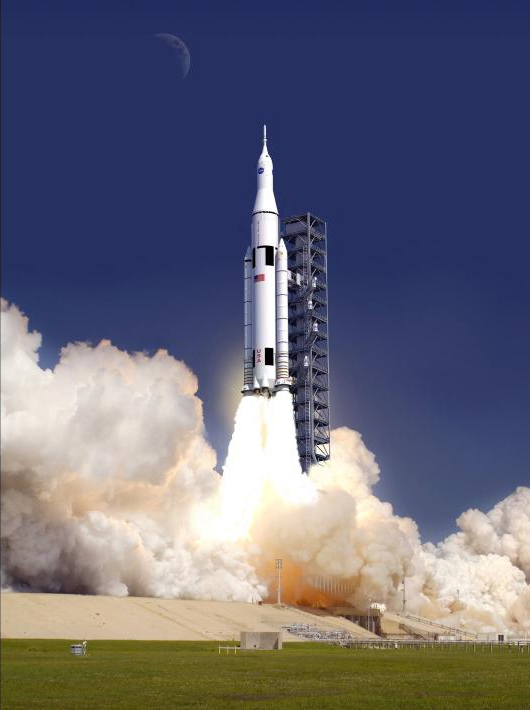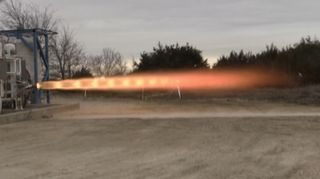Voices: Experts React to NASA's 2013 Budget Request

This story was updated on Feb. 14 at 1:41 p.m. ET.
President Barack Obama unveiled his proposed federal budget for 2013 today (Feb. 13), which includes $17.7 billion for NASA and requires painful cuts to the agency's Mars exploration plans that are already drawing criticism from astronomers.
NASA's portion of the proposed 2013 budget would include a 20 percent cut on planetary science missions, while including some funding boosts for space technology and human exploration.
According NASA chief Charles Bolden, the drop in planetary science funding for 2013 means NASA will not participate in two European-led missions to Mars, one in 2016 and another in 2018. The space agency is aiming for a potential new Mars mission in 2018, and looking to overhaul its strategy for robotic exploration of the Red Planet, Bolden told reporters and members of the public today.
The budget proposal includes continued support for new commercial spacecraft development and NASA's post-shuttle spaceflight program — the Space Launch System (SLS) and Orion crew capsule — aimed at sending astronauts to an asteroid by 2025. [Highlights of NASA's 2013 Budget Request]
Here's a look at what some experts say on NASA's proposed budget for 2013:
Congressman Dana Rohrabacher (R-CA), senior member of the House Committee on Science, Space and Technology
Get the Space.com Newsletter
Breaking space news, the latest updates on rocket launches, skywatching events and more!
The administration's FY'13 budget includes almost $1.9 billion for continued pursuit of the SLS Titanic, a 'monster rocket' based on 40-year-old Space Shuttle technology in an attempt to recapture the glory days of the Apollo Saturn V. By NASA's internal estimates, the SLS and other components won't be ready to launch astronauts to an asteroid until 2028, after we have spent over $130 billion towards the mission. By those same estimates, NASA has shown how they can accomplish the exact same mission with our existing fleet of launch vehicles four years earlier and at less than half that cost.
If I had someone come to me and say they wanted to spend well over a hundred billion dollars when they knew the task could be done more quickly and less expensively, I'd say, 'You're fired.'
As expected, the President did not request an additional $1 billion above last year's appropriation, which NASA's plans seem to require. Of course, even that funding level would have fallen about $2 billion short of what NASA would need next year to keep the SLS Titanic on schedule.
I am pleased the President requested $830 million for Commercial Crew programs, which is America's single most important near-term civil space project. But cutting the Technology budget while increasing the Earth Science budget – a function that doesn’t even belong in a space exploration agency – and continuing to shovel resources into the SLS money pit is a travesty.
Any more of this kind of "leadership" and soon NASA's entire budget will be consumed by JWST and the SLS, two things that won’t have made it off the launch pad ten years from now.
Bill Nye the Science Guy, Planetary Society CEO
The priorities reflected in this budget would take us down the wrong path. Science is the part of NASA that’s actually conducting interesting and scientifically important missions. Spacecraft sent to Mars, Saturn, Mercury, the moon, comets, and asteroids have been making incredible discoveries, with more to come from recent launches to Jupiter, the moon, and Mars. The country needs more of these robotic space exploration missions, not less.
On the lack of future flagship missions to Mars or other planets:
I encourage whoever made this decision to ask around; everyone on Earth wants to know if there is life on other worlds. When you cut NASA’s budget in this way, you’re losing sight of why we explore space in the first place.
There is no other country or agency that can do what NASA does—fly extraordinary flagship missions in deep space and land spacecraft on Mars.
Jim Bell, Planetary Society President
On the lack of future flagship missions to Mars or other planets:
People know that Mars and Europa are the two most important places to search in our solar system for evidence of other past or present life forms. Why, then, are missions to do those searches being cut in this proposed budget? If enacted, this would represent a major backwards step in the exploration of our solar system.
How many government programs can you think of that consistently fill people with pride, awe, and wonder? NASA's planetary exploration program is one of the few, and so it seems particularly ironic and puzzling that it has been so specifically targeted for such drastic budget cuts.
Now that the budget is out, The Planetary Society will mobilize its tens of thousands of members and supporters in the fight to restore science in NASA to its rightful place. We will work with Congress to advocate a balanced program of solar system exploration with exciting and compelling missions that are supported by the public—who ultimately are the ones paying for everything NASA does.
Congressman Adam Schiff (D-CA), House of Representatives
The President’s proposed budget released today will dramatically reduce the planetary science program, making ground-breaking and breath-taking trips to the reaches of our universe sadly out of reach. Every trip that we make unlocks new and exciting possibilities that could be closed off with these cuts.
The Mars program, much of which is housed at the Jet Propulsion Laboratory, is one of our nation’s scientific crown jewels, and has been a tremendous success. While the President today committed to educating the next generation of scientists and engineers, he also strangely chose to eliminate many future jobs for them after graduation.
In my meeting with NASA Administrator Bolden last week, I expressed my deep concerns over these cuts and my commitment to restore the Mars budget. We must not sacrifice American leadership in space exploration, and I intend to fight this misguided proposal tooth and nail.
Senator Kay Bailey Hutchison (R-TX), Ranking Member,Senate Commerce, Science and Transportation Committee
On NASA's plans for the Orion crew capsule and Space Launch System:
Despite repeated assurances from NASA and White House officials that the SLS and Orion are ‘key elements of our future strategy for human space exploration', vehicle development for the heavy lift SLS rocket and the Orion capsule is cut by hundreds of millions of dollars. These reductions will slow the development of the SLS and the Orion crew vehicle, making it impossible for them to provide backup capability for supporting the space station. The Administration remains insistent on cutting SLS and Orion to pay for commercial crew rather than accommodating both.
I will once again work with my colleagues in the Congress to ensure NASA receives the funding, consistent with law passed by Congress and signed by the President, needed to preserve our leadership in space and open the doors to future exploration and missions of discovery.
Eric Anderson, Commercial Space Federation Chairman and CEO of Space Adventures
On NASA embracing commercial spacecraft developed by private companies:
By partnering with private companies, NASA can regain U.S. access to space, while the agency continues to lead the world in exploration beyond low-Earth orbit. With a focused mission, NASA will be able to cover more ground with its limited funding, and get services to low-Earth orbit safely and cost-effectively.
On NASA's increase in funding for space technology development:
These precious investments help ensure that NASA remains at the forefront of technology and exploration. The funds boost the U.S. economy; maintaining high-tech jobs in America and keeping NASA’s human and robotic programs strong.

Alex Saltman, Executive Director, Commercial Space Federation
With the Shuttle fleet retiring last year, Americans look forward to the day when we return our astronauts to space on American rockets. We are pleased that the Administration is requesting the funding necessary to make that happen. Now it’s Congress’s job to help put America back in space.
On NASA's proposed funding increase for space technology:
Continued funding for NASA’s Space Technologies program is critical. Without these technologies, NASA will be stuck with 20th century capabilities while advanced spaceflight technologies take root in space programs overseas.
Jim Maser, President for Pratt & Whitney
In a tight budget environment, NASA and the Administration have to make some very difficult decisions about priorities for America’s space program. The request to increase funding for commercial space transportation development is the right decision to keep our space program balanced, but it also requires appropriate insight and controls to ensure progress toward integrated capability can be confirmed. The funding increase in commercial space transportation development shouldn't come at the expense of other top American priorities, including dedicated, full funding of the Space Launch System launch vehicle development that can't be siphoned off for other, lower priority programs or uses.
Follow SPACE.com for the latest in space science and exploration news on Twitter @Spacedotcom and on Facebook.
Join our Space Forums to keep talking space on the latest missions, night sky and more! And if you have a news tip, correction or comment, let us know at: community@space.com.

Space.com is the premier source of space exploration, innovation and astronomy news, chronicling (and celebrating) humanity's ongoing expansion across the final frontier. Originally founded in 1999, Space.com is, and always has been, the passion of writers and editors who are space fans and also trained journalists. Our current news team consists of Editor-in-Chief Tariq Malik; Editor Hanneke Weitering, Senior Space Writer Mike Wall; Senior Writer Meghan Bartels; Senior Writer Chelsea Gohd, Senior Writer Tereza Pultarova and Staff Writer Alexander Cox, focusing on e-commerce. Senior Producer Steve Spaleta oversees our space videos, with Diana Whitcroft as our Social Media Editor.